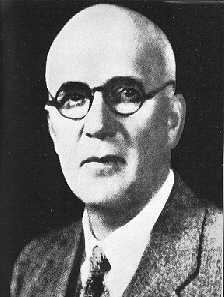Name Julian Johnson Role Surgeon | Died 1939 | |
 | ||
Similar People Jesse L Lasky, Adolph Zukor, Herbert Brenon, Richard Rosson, Allan Dwan | ||
Julian johnson path of the masters ishwar puri
Julian Philip Matthew Johnson (1873–1939, Beās, British India) was an American surgeon and author of several books on Eastern spirituality. He spent much of the 1930s in India, was associated with the Radha Soami Satsang Beas movement and Surat Shabd Yoga, and wrote five books (one unpublished) as a result of his experiences.
Contents
- Julian johnson path of the masters ishwar puri
- Forgiveness with dr lonnie edwards and julian johnson
- Early days and education
- Religious studies
- Move to India
- Paul Petzoldt
- Elizabeth Rose Bruce
- Legacy
- The Path of the Masters
- Photos
- References
Forgiveness with dr lonnie edwards and julian johnson
Early days and education
Johnson grew up in a staunch Christian family in the southern United States, became a Baptist minister at age 17, graduated Bachelor of Divinity in Bolivar, Missouri, and received an appointment as a missionary to India at age 22. Johnson claimed that experiences during his three-year stay in India, however, rendered him surprised by the deep understanding possessed by Indians he had sought to convert, and urged him towards further study.
Back in the United States, he earned two master's degrees (M.A. theology) at the University of Chicago, resigned his 17-year Baptist ministership, and earned an M.D. from the State University of Iowa. He served as an assistant surgeon in the United States Navy during World War I, and later went into private practice. He also owned and flew his own airplanes.
Religious studies
Over the years, he took to studies of various religious and philosophical teachings, including Christian Science, Freemasonry, New Thought, Rosicrucianism, Spiritualism, Blavatskyan Theosophy, and world religions. His spiritual explorations culminated when he visited an old friend (Julia McQuilkin in Oregon) who was a disciple of Bābā Sāwan Singh of Beās, Pañjāb, India. Convinced that he had found his path, Johnson requested initiation, which was arranged for by Dr. Harold Brock and performed on 21 March 1931. After a year, Johnson left once more for India on 24 March 1932. (At the two-week stopover in Hawaii, he had discussions on religion with the English Jōdo Shinshū priest Ernest "Shinkaku" Hunt [1876–1967] of the Hongwanji.)
Move to India
Dr. Johnson was the first American to live at Derā Bābā Jaimal Singh, in Beās, where he became busy with study, writing, medical work, meditation, and traveling with Sāwan Singh. He edited Sardār Sevā Singh's English translation of Soāmī Shivdayāl Singh's Sār Bacan, and coined the term "Audible Life Stream". He authored With a Great Master in India (1934), the first book on Surat Shabd Yoga by a Westerner, and his masterwork The Path of the Masters.
Paul Petzoldt
In Kashmir, Johnson met Paul Petzoldt (who later became the mountaineer, Outward Bound instructor, and founder of the National Outdoor Leadership School), and invited him to the Derā where Petzoldt served as Johnson's assistant, even helping in surgical operations. Petzoldt was interested in adventure and exploration, but not in spirituality. His choleric personality led to friction with Beās residents, with tragic consequence. Petzoldt's side is told in Molly Absolon, "Paul Tells His Story" in The Leader, Fall 1995, NOLS [1].
For a comprehensive look at how Johnson died see the book, "The Mystery of Dr. Johnson's Death: A Scandal in the Punjab," published by Mt. San Antonio College, 2017.
Elizabeth Rose Bruce
Johnson's wife Elizabeth Rose (died 1941) was an American socialite, traveler, adventurer, herbalist, and spiritual seeker. She was a faithful worker of the Rādhāsoāmī Satsang, Dayāl Bāgh, Āgrā, India, and a disciple of Sir Ānand Sarūp, Kt, but eventually left Ānand Sarūp. Johnson married her and they lived out life in Beās. Johnson wrote her "autobiography" The Unquenchable Flame (Beās: Five Rivers Manufacturing Company, 1935).
Legacy
Johnson remains the most well-known among many Western adherents of and authors on Sant Mat / Surat Shabd Yoga (IAST: Sūrat-Śabd Yoga). Possibly, no other single author in Sant Mat has more influenced North American "Shabdism" (—David C. Lane's term) than Johnson.
The Path of the Masters
Johnson's magnum opus, now published as The Path of the Masters: The Science of Surat Shabd Yoga: The Yoga of the Audible Life Stream (but originally titled The Path of the Masters: The Science of Sūrat Shabda Yoga: Santon kī Shikshā) is a comprehensive, explicit, systematically organised, meticulous, and polished work on the Path of the Soundstream and Lightstream. Published in France (1939), the USA (1957) and India (slightly revised by the Radha Soami Satsang Beas Publications Committee in 1972 and 1985 to delete provocative language, and extensively revised in 1993,) it remains popular among Western adherents of Sant Mat. However, its author's blunt style and now outmoded opinions – influenced by Northern European racist notions then in vogue but now considered politically incorrect — have turned off some modern readers. The text's sheer eloquence, however, has made the work the object of plagiarism by other writers, especially in the United States, where it used to be almost totally unknown to the general reading public. The work appears to have heavily influenced the American Eckankar (ECK) religion, and its various offshoots and spin-offs, through ECK founder Paul Twitchell's alleged plagiarism – discussed at length and in depth in Prof. David C. Lane's exposé The Making of a Spiritual Movement.
Among Western adherents at least, The Path of the Masters has enjoyed long-time popularity among foreign-language works on Sant Mat. A sampling of Johnson's polished prose (1985 pagination) shows the logic that has proven compelling to Western readers, even outside of Sant Mat circles:
Photos
Published photographs of Julian and Elizabeth Rose Johnson include:
